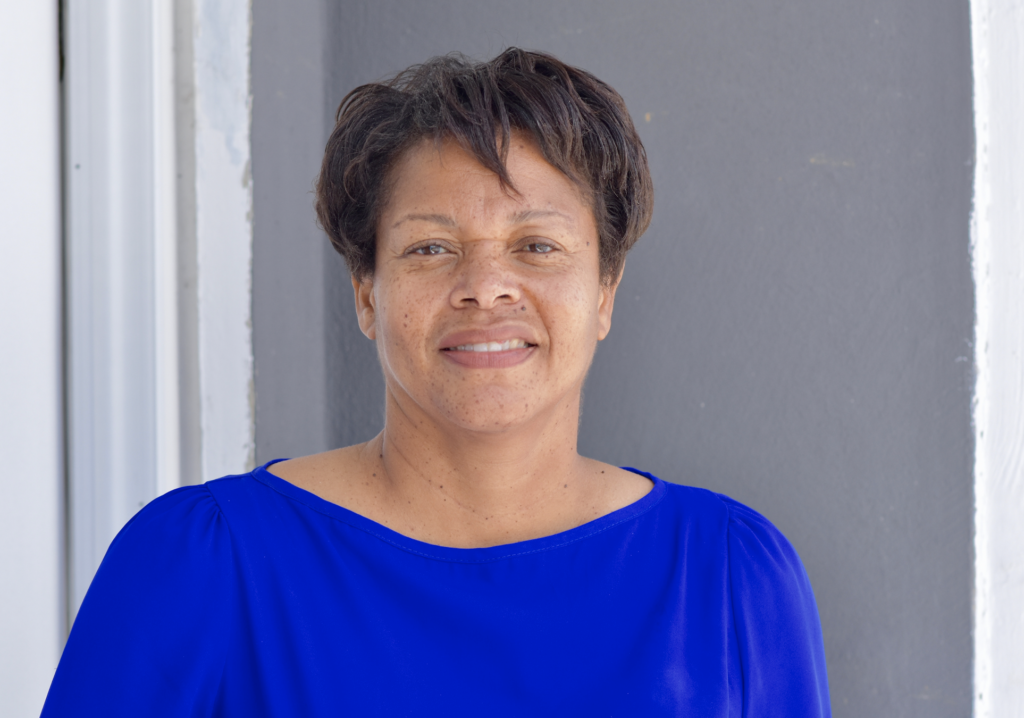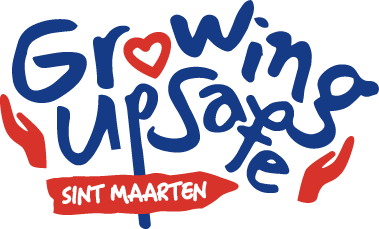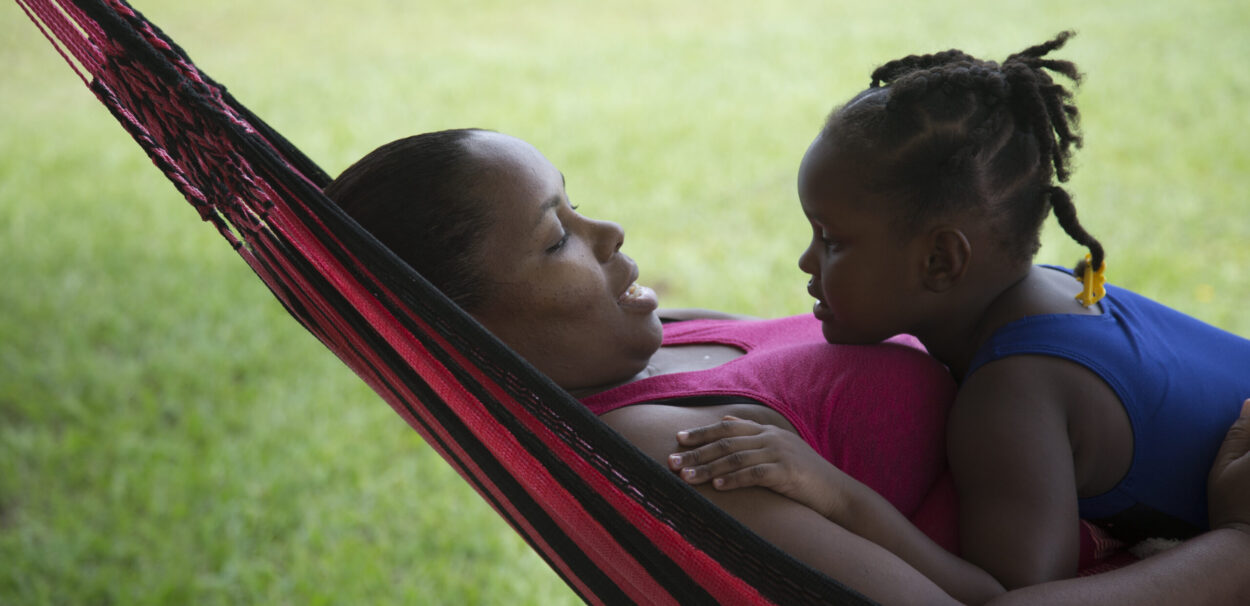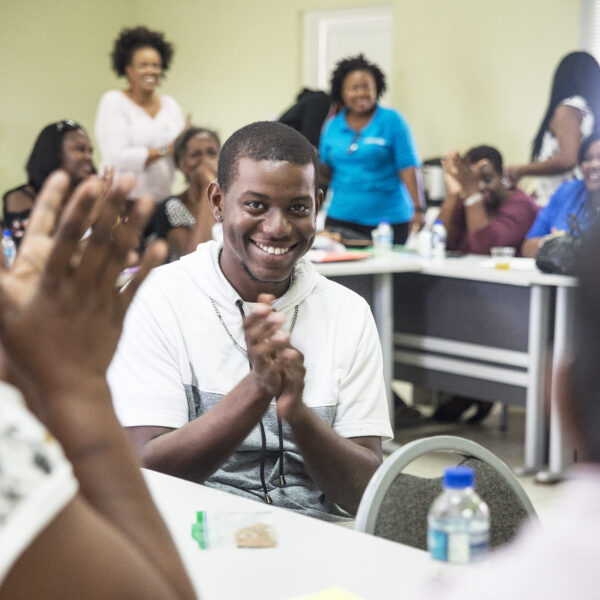Children who receive adequate support from their families or other adults are often better able to deal with traumatic experiences – be it the consequences of a hurricane or child abuse. Psychologist Xiomara Balentina: “It is very important to support institutions that can provide vulnerable children with a safety net.”
“If trauma is handled correctly, it can help a person grow”
“This might not be a popular opinion, but I think that we use the word ‘trauma’ a bit too easily,” states Xiomara Balentina, psychologist at the Student Support Services Division (SSSD). Xiomara has an impressive list of qualifications including Child and Youth Psychology, Child and Youth Behavioral Therapy and Systemic Therapy.

Born on St. Eustatius, Xiomara moved back to the Caribbean in 2012 to work at SSSD, after having lived in the Netherlands for 16 years. “My role here at the SSSD is very broad. I provide support to students, and by extension, their families and to school care teams. In addition to this, I conduct various psychological assessments, including special education assessment.”
Xiomara has not experienced many trauma cases since working at SSSD. She believes that the word ‘trauma’, especially since the passage of Hurricane Irma, is being used too loosely: just because one experiences a distressing event such as a natural disaster, or even abuse, it does not mean that these experiences will result in a child developing Post Traumatic Stress Disorder (PTSD). “The local use of the word trauma generally implies the presence of PTSD. However, a child’s level of distress and suffering oftentimes depends on factors such as resilience and the presence of a social network.”
Traumatic Events
“When a traumatic event happens, let us say a death in the family – it is normal to be sad, have trouble concentrating, be angry, feel lonely and have a multitude of other feelings or display out of the ordinary behaviors. However, if these feelings are not dealt with properly, this might lead to various issues on a long-term basis. If the child is not able to resolve the hurt in a positive manner, if no outlet is provided, it can impact the child in a profound way, which can result in PTSD.”
“In regard to the passage of Hurricane Irma, I would like to stress that many children who experienced the hurricane did not develop a trauma/PTSD. Of course, some children become nervous when it is windy outside, in fact, even adults become a bit tense when we hear the wind blowing, but this is a normal reaction to an extra ordinary experience. Our children tend to be more impacted by the aftermath of a hurricane: inadequate housing, unemployed parents, food shortages, than the actual hurricane itself.
“Our children tend to be more impacted by the aftermath of a hurricane: inadequate housing, unemployed parents, food shortages, than the actual hurricane itself”
Prolonged Suffering
“Prolonged suffering, which results in high levels of stress, impacts the way you look at yourself and others, and it impacts the way you react and function. Research even shows that prolonged suffering can change your DNA.”
That brings Xiomara to the subject of intergenerational trauma. This can be a direct result of unresolved suffering and distress: persons who were abused during childhood can end up in an abusive relationship or abuse their own children later on in life, if they were unable to resolve their early childhood issues, says Xiomara. “Treating intergenerational trauma can be very challenging, if one is not aware of his or her deeply engrained habits and patterns.”
Emotional distress is also a lot harder to prevent or treat if your environment is not providing the needed resources. “For example, we have poverty on Sint Maarten, which can result in prolonged stressful situations and suffering. There are limitations to what I can do, if a child and its family lack basic needs such as shelter, food, water, health. Then the suffering continues. If we, as a community, do not address the larger issues, we will continue the cycle of suffering and distress. We oftentimes try to fix the child or fix the family, but at times the pathology lies within the environment and not within the individual or the family.”
“We oftentimes try to fix the child or fix the family, but at times the pathology lies within the environment and not within the individual or the family.”
Positive Reinforcement
“I remember treating a child who was being neglected by her mother. Her mom and grandmother were also neglected as children. This is a case of intergenerational trauma as we discussed earlier. Attempts were made to expose the pattern to the parent, but this failed. I then tried to assist this child to come to the realization that she is worthy despite of her experiences. However, she needed to hear this from significant others within her network. The stronger a child’s network, the better you can prevent or resolve the suffering.”
There is such a thing as ‘post traumatic growth’ after having experienced a distressing event, explains Xiomara. “Instead of focusing on suffering and distress, we can also focus on the positive things that occur because of negative experiences. Research has discovered that a traumatic event can lead to positive changes. If children, for example, discover that a neighbor cares, that a teacher will protect them, that they can overcome this obstacle – it shows them that they are cared for, are safe, and are strong enough to overcome a challenging situation. Therefore, professionals who work with children can play such an important role in helping to reframe things.”
Cultural Understanding
PTSD is actually a western concept, Xiomara says. “In the 1970’s after the Vietnam War, the term became especially popular within the anti-war movement. The West has held on to the notion that all people experience suffering in the same way, but this is not true. Different societies have different terms and standards for suffering and distress.”
The Diagnostic and Statistical Manual of Mental Disorders (DSM) is the handbook used by health care professionals in the West and much of the world and is viewed as the authoritative guide to diagnosing mental health disorders. However, culture is often not taken into consideration, Xiomara says. “How people interpret and display suffering differs per culture. Here in St. Maarten, people’s emotional distress is often displayed through the experiencing of physical symptoms. We see complaints such as hypertension, headaches, body pains, etc. It is important to remember this in relation to diagnosing trauma here.”
“Here in St. Maarten, people’s emotional distress is often displayed through the experiencing of physical symptoms.”
Local Networks
When she came back to Sint Maarten, she realized that she could not just copy-paste the theories and practices that she had learnt in the Netherlands. Each society, culture and person is different and this should be observed and adapted to be effective. “But there is one rule that always applies: creating a strong network for your client is very important. When counseling a child, I always involve the larger system: parents, family members, teachers, doctors, court of guardianship, police – whomever I can work together with to positively strengthen the child’s network.”
NGO’s and religious institutions also play a big role in assisting children and their families on the island, Xiomara says. “It might be hard to solve our systemic issues quickly, but in the meantime, our government can provide support to institutions that provide a safety net for children. Once a child has a strong network, the chance that he will overcome a traumatic situation is much higher.”
What is trauma?
Trauma is an emotional response to a terrible event like an accident, rape or natural disaster. Immediately after the event, shock and denial are typical. Longer-term reactions include unpredictable emotions, flashbacks, strained relationships and even physical symptoms like headaches or nausea. (American Psychological Association)



